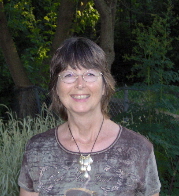You probably know the back pain I mean. It’s that nagging, cannot-be-ignored pain between your shoulder blade and spine. It often feels like a knot or spasm.
It’s usually on the side of your dominant hand. If you’re right-handed, it will probably be on the right side of your back.
There are two likely causes and one that often gets the blame, but usually isn’t the cause.
The rhomboid muscle (there is one on each side of your back) often gets blamed as being the cause of that pain. The reason for this is probably because the muscle happens to be in the same area as your back pain. This is the muscle most massage therapists will probably try to rub out for you, but it may or may not (probably not) be the cause of your pain.
If this massage doesn’t help, or the muscle “won’t release,” then the rhomboid muscle is not the cause of your pain.
A more likely cause is that the muscles where your knot is located are being overstretched or strained. They are complaining about this by causing pain. Overstretched muscles will go into spasm to keep from being stretched further and torn.
Your back muscles can get overstretched when the muscles in front of your body (your chest and neck) are short and tight. Over-stretching can also occur when you work or play a lot with your arm stretched out in front.
You can correct this by strengthening the muscles between your spine and shoulder blades. The stronger muscles won’t be so easily overstretched and so won’t go into spasm like they do now. Also, strengthen the muscles behind your neck gently so you won’t go into “forward-head” posture, which also strains your upper back muscles.
Loosen, relax and open the muscles in front of your body, too, with stretching or massage.
Another likely cause of this back pain could be the scalene muscles, which are located on each side of your neck. These muscles can harbor trigger points. Trigger points in the scalenes refer, or cause, pain into the rhomboid area.
Often a massage therapist will try to work out a pain by working where it hurts. That only works sometimes, in some situations.
You can see in the two likely causes above, that the problem can be elsewhere. The pain between your spine and shoulder blade may be caused by muscles in front of your body being short or trigger points in your neck.
The first thing I would suggest today would be to begin a strengthening program for your upper back. This will help you get rid of that nagging pain between your spine and shoulder blade.
It doesn’t matter whether you call them “knots” or muscle spasms or contractions, they hurt! And you CAN get rid of them naturally. 🙂 This is good…
Because You Deserve To Feel Better!

